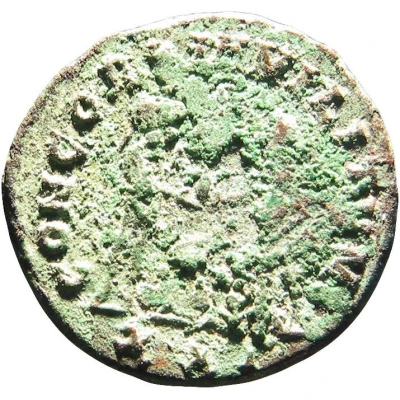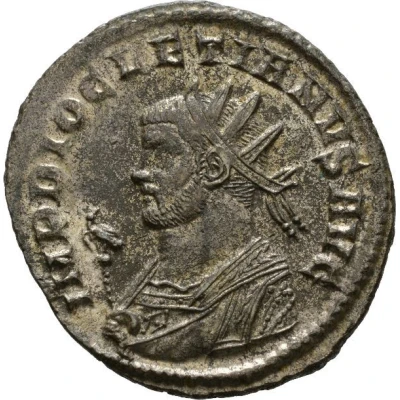


© American Numismatic Society (ANS)
Antoninianus - Diocletianus CONCORDIA MILITVM
| Silver | 3.3 g | 21 mm |
| Issuer | Rome › Roman Empire (27 BC - 395 AD) |
|---|---|
| Emperor | Diocletian (Gaius Aurelius Valerius Diocletianus) (284-305) Maximian Herculius (Marcus Aurelius Valerius Maximianus) (286-305) |
| Type | Standard circulation coin |
| Years | 293-295 |
| Value | Antoninianus (1) |
| Currency | Antoninianus, Reform of Caracalla (AD 215 – 301) |
| Composition | Silver |
| Weight | 3.3 g |
| Diameter | 21 mm |
| Shape | Round (irregular) |
| Technique | Hammered |
| Orientation | Variable alignment ↺ |
| Demonetized | Yes |
| Updated | 2024-10-05 |
| Numista | N#306056 |
|---|---|
| Rarity index | 100% |
Reverse
Diocletian, draped, cuirassed, standing right, holding sceptre in right hand and receiving Victory on globe from Jupiter; Jupiter, standing left, holding sceptre.
Script: Latin
Lettering:
CONCORDIA MILITVM
B//XXI
Translation:
Concordia Militum.
Harmony with the soldiers.
Comment
Mass varies: 2.636–4.17 g;Diameter varies: 19.5–21.84 mm;
Example of this type:
American Numismatic Society (ANS)
Source:
Online Coins of the Roman Empire (OCRE)
Interesting fact
One interesting fact about the Antoninianus - Diocletianus (CONCORDIA MILITVM) coin is that it was issued during a time of significant economic and political change in the Roman Empire. The coin was minted during the reign of Diocletian, who introduced a number of reforms aimed at stabilizing the empire's economy and military. The coin's design, which features the goddess Concordia on the reverse, may have been intended to promote the idea of unity and harmony within the empire. Additionally, the use of silver in the coin's composition suggests that it may have been valued for its intrinsic worth, as well as its symbolic association with wealth and power.

